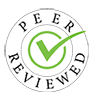Exploring the Role of Resilience in Overcoming Traumatic Experiences
Keywords:
Resilience, Traumatic experiences, Overcoming, Psychological resilienceAbstract
This research examines resilience in trauma survivors. Trauma includes abuse, accidents, natural calamities, and conflict. Some people are psychologically resilient, adapting, recovering, and even thriving after tragedy. To understand resilience and trauma recovery, the study will combine psychology, neuroscience, and social sciences. The research examines resilience literature, theories, and empirical investigations to identify essential components and processes that lead to trauma resiliency. Social support networks, positive coping methods, self-efficacy, and adaptive cognitive processes will be examined as resilience protective variables. The research will also investigate biochemical and genetic indicators of resilience. Cognitive reappraisal, meaning-making, post-traumatic development, and neuroplasticity will be investigated as resilience mechanisms. The research explores these pathways to show how trauma survivors might build resilience. This study may help clinicians design treatments and therapies to help trauma survivors recover. Mental health providers may better adapt therapies to trauma survivors by studying resilience variables.
References
Masten, A. S. (2001). Ordinary magic: Resilience processes in development. American Psychologist, 56(3), 227-238.
Rutter, M. (1985). Resilience in the face of adversity: Protective factors and resistance to psychiatric disorder. The British Journal of Psychiatry, 147(6), 598-611.
Uchino, B. N. (2009). Understanding the links between social support and physical health: A lifespan perspective with emphasis on the separability of perceived and received support. Perspectives on Psychological Science, 4(3), 236-255.
Southwick, S. M., Bonanno, G. A., Masten, A. S., Panter-Brick, C., & Yehuda, R. (2014). Resilience definitions, theory, and challenges: Interdisciplinary perspectives. European Journal of Psychotraumatology, 5(1), 25338.
Cohen, ., & Wills, T. A. (1985). Stress, social support, and the buffering hypothesis. Psychological Bulletin, 98(2), 310-357.
Norris, F. H., Stevens, S. P., Pfefferbaum, B., Wyche, K. F., & Pfefferbaum, R. L. (2008). Community resilience as a metaphor, theory, set of capacities, and strategy for disaster readiness. American Journal of Community Psychology, 41(1-2), 127-150.
Hobfoll, S. E. (1989). Conservation of resources: A new attempt at conceptualizing stress. American Psychologist, 44(3), 513-524.
Masten, A. S., & Obradović, J. (2008). Disaster preparation and recovery: Lessons from research on resilience in human development. Ecology and Society, 13(1), 9.
Taylor, S. E., & Stanton, A. L. (2007). Coping resources, coping processes, and mental health. Annual Review of Clinical Psychology, 3, 377-401.
Walsh, F. (2003). Family resilience: A framework for clinical practice. Family Process, 42(1), 1-18.
Fredrickson, B. L., Tugade, M. M., Waugh, C. E., & Larkin, G. R. (2003). What good are positive emotions in crisis? A prospective study of resilience and emotions following the terrorist attacks on the United States on September 11th, 2001. Journal of Personality and Social Psychology, 84(2), 365-376.
Masten, A. S., Best, K. M., & Garmezy, N. (1990). Resilience and development: Contributions from the study of children who overcome adversity. Development and Psychopathology, 2(4), 425-444.
Hjemdal, O., Vogel, P. A., Solem, S., Hagen, K., & Stiles, T. C. (2011). The relationship between resilience and levels of anxiety, depression, and obsessive-compulsive symptoms in adolescents. Clinical Psychology & Psychotherapy, 18(4), 314-321.
Galea, S., Nandi, A., & Vlahov, D. (2005). The epidemiology of post-traumatic stress disorder after disasters. Epidemiologic Reviews, 27(1), 78-91.
House, J. S., Umberson, D., & Landis, K. R. (1988). Structures and processes of social support. Annual Review of Sociology, 14(1), 293-318.
Downloads
Published
How to Cite
Issue
Section
License
Copyright (c) 2020 International Journal for Research Publication and Seminar

This work is licensed under a Creative Commons Attribution 4.0 International License.
Re-users must give appropriate credit, provide a link to the license, and indicate if changes were made. You may do so in any reasonable manner, but not in any way that suggests the licensor endorses you or your use. This license allows for redistribution, commercial and non-commercial, as long as the original work is properly credited.


